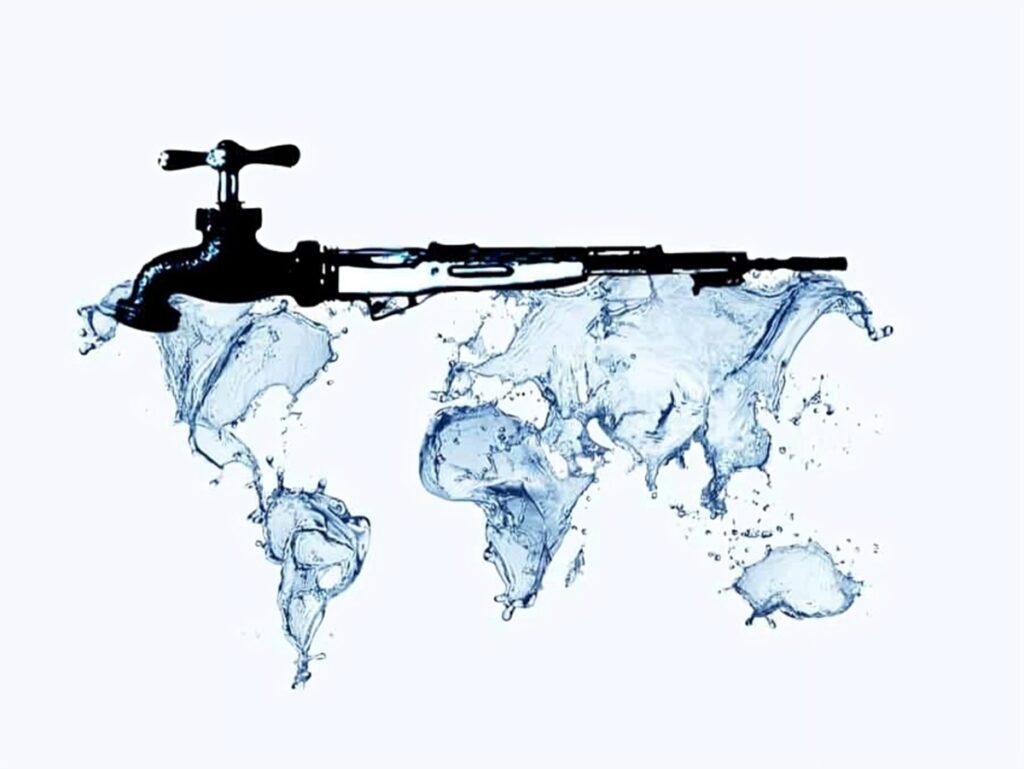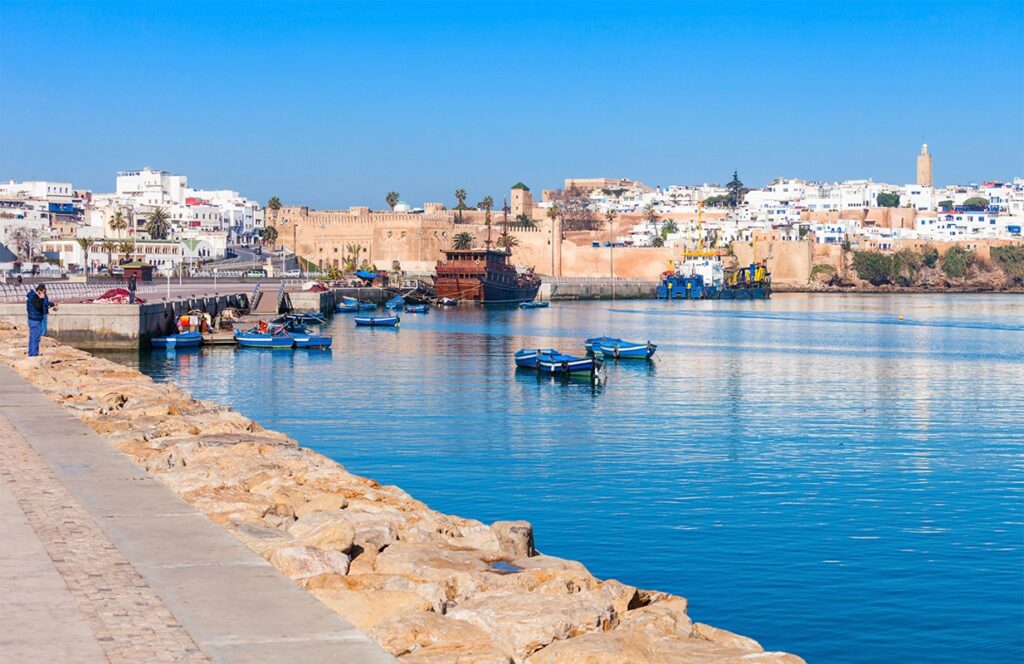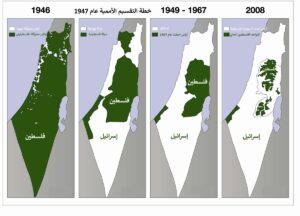Water Wars: The Hidden Conflicts of the Future

Water is the lifeblood, but at the same time, it could become the trigger for devastating future conflicts known as "water wars." With the world's growing population, climate change leading to scarce water resources, and the contamination of existing sources, concerns are growing about the potential for armed conflicts to erupt over control of this vital resource.
Why is water a source of conflict?
The potential causes of water wars are centered around several main axes:
Increasing scarcity: Many regions of the world suffer from freshwater scarcity, a problem exacerbated by rapid population growth, agricultural and industrial expansion, and mismanagement of water resources.
Transboundary waters: Many countries share major water resources, such as transboundary rivers and lakes. The absence of comprehensive and effective agreements to manage these resources can lead to political tensions and conflicts between riparian states.
Climate change: Climate change exacerbates water scarcity through prolonged droughts, changing rainfall patterns, and melting glaciers, reducing available water supplies.
pollution: Industrial and agricultural pollution contribute to the deterioration of water quality, making it unfit for human and agricultural use, and increasing pressure on clean water resources.
Potential hot spots
There are several regions in the world that are potential hotbeds of water conflict due to their geographical location and hydrological characteristics:
Middle East and North Africa: This region is one of the world's driest, and many of its countries depend on transboundary rivers such as the Nile, Euphrates, and Tigris, making it vulnerable to tensions.
Central Asia: Central Asian countries compete for the resources of rivers that originate in the mountains and flow through several countries before emptying into the dramatically shrinking Aral Sea.
Southeast Asia: The Mekong River Basin is another example of an area that could see future conflict due to dam construction and its impact on water flow.
Is Morocco immune to future wars over water?
Although Morocco's major rivers originate and flow within it (such as the Sebou, Oum Er-Rbia, and Moulouya), which reduces cross-border water conflicts, Morocco Not immune Serious challenges could lead to severe water crises, and while they may not necessarily amount to “wars” in the traditional sense, they could cause significant social and economic tensions.

Factors threatening the water situation in Morocco:
climate change:
Low rainfall: Morocco is experiencing a significant decline in rainfall, with a decrease of 471 TP3T, according to recent reports. This shortage is directly impacting dam and groundwater reserves.
high temperatures: Rising temperatures increase evaporation rates from dams and water bodies, reducing available quantities.
recurrent dehydration: Drought has become a recurring phenomenon in Morocco, placing the country in a state of structural water stress.
excessive depletion of water resources:
agricultural sector: The agricultural sector consumes the largest proportion of water (more than 871 TP3T), and with agricultural expansion and the adoption of inefficient irrigation methods in some areas, pressure on water resources is increasing.
groundwater: There is significant depletion of groundwater aquifers due to indiscriminate drilling of wells and over-exploitation, threatening their sustainability.
Population growth and increasing demand: The demand for water for domestic, industrial and tourism uses increases with population growth and economic development.
Mismanagement and pollution:
Contamination of surface and groundwater with industrial and agricultural pollutants reduces usable quantities.
Lack of effective coordination between different sectors in water management.
As a result of these factors, Morocco's per capita water availability is approaching the water poverty threshold (500 cubic meters per year), necessitating urgent action to address these challenges. Moroccan authorities have declared a state of water emergency in some areas.
Which Arab countries are most likely to experience water wars and why?
Many Arab countries are vulnerable to "water wars," or at least to major tensions and conflicts due to water scarcity and their reliance on shared transboundary water resources. These countries and regions can be classified as follows:
Nile Basin countries (Egypt and Sudan):
the reason: Almost total dependence on the Nile River, which originates in other countries (mainly Ethiopia).
Detail: Egypt is one of the world's driest countries and relies on the Nile for over 951 TP3T of water. The construction of the Grand Ethiopian Renaissance Dam raises serious concerns about Egypt and Sudan's water share, leading to years of tense negotiations and the potential for geopolitical conflict over the management of the Nile's resources. Historically, the Nile has been the lifeblood of these countries, and any threat to their water share is considered a threat to national security.
Tigris and Euphrates Basin Countries (Iraq and Syria):
the reason: Their dependence on the Tigris and Euphrates rivers, which originate in Türkiye and Iran.
Detail: Both Iraq and Syria face significant challenges due to dams built by Turkey on the rivers (such as the Turkish GAP Project), as well as Iranian dams on the tributaries that feed the Tigris. These dams reduce water flow to downstream countries, leading to the drying up of marshes, the degradation of agricultural land, population displacement, and the exacerbation of humanitarian and environmental crises. The lack of clear and binding agreements on water allocation further exacerbates tensions.
Jordan River Basin Countries (Jordan, Palestine, Israel, Syria, Lebanon):
the reason: Severe water scarcity in the region and existing geopolitical conflicts.
Detail: The Jordan River Basin is one of the most arid regions in the world. Jordan suffers from severe water scarcity, and Palestine relies on water resources under Israeli control. Israel has taken control of parts of the Wazzani and Hasbani rivers (which feed the Jordan River), affecting Jordan and Lebanon's water quotas. Historical conflict and occupation add a dangerous dimension to the water crisis in this region, where water is used as a tool for political pressure.
Yemen:
the reason: Severe drought, groundwater depletion, and internal conflicts.
Detail: Yemen is suffering from one of the world's worst humanitarian and water crises. The country relies heavily on groundwater, which is being depleted at unsustainable rates, particularly for agricultural use (such as qat cultivation). The ongoing conflict in Yemen is hampering any efforts to manage water efficiently and making it more difficult for the population to access safe drinking water and irrigation, potentially exacerbating local conflicts over scarce water wells.
Some Gulf and North African countries:
the reason: Scarcity of renewable water resources, reliance on expensive desalination, and the impacts of climate change.
Detail: Although the Gulf states possess significant financial capabilities to invest in desalination, their total reliance on this resource represents a strategic weakness. North African countries such as Algeria, Tunisia, and Libya are suffering from declining rainfall and increasing demand for water, which increases pressure on their limited water resources and could lead to social and economic tensions if the crisis is not addressed effectively.
Avoiding Disaster: Possible Solutions
To prevent water from becoming a major factor in conflict, comprehensive and integrated strategies must be adopted:
Water diplomacy and international cooperation: Dialogue and cooperation between riparian states must be strengthened to reach fair and equitable agreements for the management of shared water resources.
Sustainable water management: This requires adopting modern technologies in agriculture and industry to rationalize water consumption, and developing non-traditional water sources such as seawater desalination and wastewater treatment.
Awareness and education: Awareness must be raised about the importance of rationalizing water consumption and the need to preserve it for future generations.
Addressing climate change: Reducing greenhouse gas emissions and investing in renewable energy are vital to mitigating the impacts of climate change on water resources.
Water wars are not inevitable. With concerted international efforts and a commitment to wise water resource management, water can be transformed from a potential source of conflict into a bridge for cooperation and peace.





